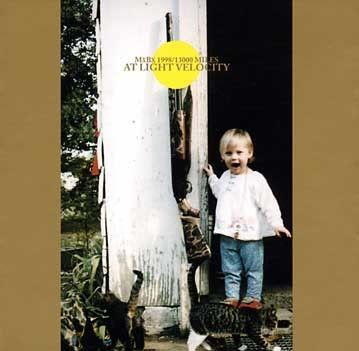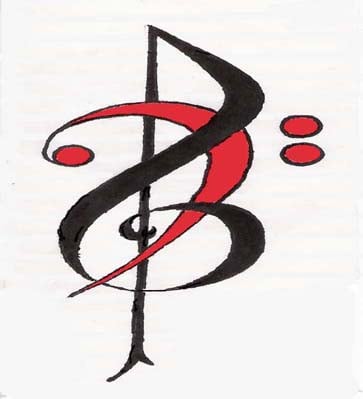Progarchives.com has always (since 2002) relied on banners ads to cover web hosting fees and all.
Please consider supporting us by giving monthly PayPal donations and help keep PA fast-loading and ad-free forever.
/PAlogo_v2.gif) |
|
Post Reply 
|
Page <1 56789 10> |
| Author | |||||
MikeEnRegalia 
Special Collaborator 

Honorary Collaborator Joined: April 22 2005 Location: Sweden Status: Offline Points: 21206 |
 Posted: October 18 2007 at 16:59 Posted: October 18 2007 at 16:59 |
||||
I'm really sorry if I'm going on your nerves ... but I think that 9/4 and 4.5/4 are very different things, and 9/8 is much closer to what 4.5/4 means than 9/4. But maybe it's best to agree to disagree here.  |
|||||
 |
|||||
Easy Money 
Special Collaborator 

Honorary Collaborator / Retired Admin Joined: August 11 2007 Location: Memphis Status: Offline Points: 10618 |
 Posted: October 18 2007 at 17:14 Posted: October 18 2007 at 17:14 |
||||
No problemo, I enjoy talking about all this. Yeah if there was a clear accent on that extra 1/8th I could see writing it as 4.5/4 or 9/8. The main reason not to write it as 9/8 is a lot of veteran musicians are going to have a hard time getting that triplet thing out of their head. Anyway, I thought it was pretty ironic the first song I listened to after talking with you yesterday had a "1" count in it. Pretty damn ironic. 
By the way, I have seen time signatures with fractions, but I wouldn't recommend it. Edited by Easy Money - October 18 2007 at 17:17 |
|||||
 |
|||||
MikeEnRegalia 
Special Collaborator 

Honorary Collaborator Joined: April 22 2005 Location: Sweden Status: Offline Points: 21206 |
 Posted: October 18 2007 at 17:31 Posted: October 18 2007 at 17:31 |
||||
|
I don't think that anyone would use fractions in metrics ... it was just an example to illustrate the point. I think in real life 9/8 would be the only sensible way to note it - using 4/4 plus one "bar" of 1/8 would be really unusual, 3/8 + 3/8 + 3/8 would be misleading IMO. 2/8+2/8+2/8+3/8 would be possible, but it would be a bit cumbersome.
 |
|||||
 |
|||||
Easy Money 
Special Collaborator 

Honorary Collaborator / Retired Admin Joined: August 11 2007 Location: Memphis Status: Offline Points: 10618 |
 Posted: October 18 2007 at 17:41 Posted: October 18 2007 at 17:41 |
||||
|
Actually I have seen scores with fractures in the time signature. Once again I wouldn't recommend it.
|
|||||
 |
|||||
puma 
Forum Senior Member 
Joined: April 15 2007 Location: Boston, MA Status: Offline Points: 484 |
 Posted: October 18 2007 at 18:53 Posted: October 18 2007 at 18:53 |
||||
|
I mean, how many of you guys have heard the part of Fracture I'm talking about? It's after the really quiet slow violin and volume-pedal guitar, when Robert Fripp plays that big A-something chord, that's the part I'm talking about. If you heard that and tried to count it you'd call it something asinine like 4.5/4 too, I promise.
|
|||||
 |
|||||
Easy Money 
Special Collaborator 

Honorary Collaborator / Retired Admin Joined: August 11 2007 Location: Memphis Status: Offline Points: 10618 |
 Posted: October 18 2007 at 19:48 Posted: October 18 2007 at 19:48 |
||||
Yeah, that's a great tune, I'm listening to it right now and the rhythm is really hard to get. Your probably right, I'll keep trying till I get it. Anyway, so I don't look like a total posuer, that "A" sounds like some kind of suspended chord and the tune they go into is in the Lydian mode and it ascends in whole steps while the bass descends likewise. That's all I've got for now. Edited by Easy Money - October 18 2007 at 19:48 |
|||||
 |
|||||
fungusucantkill 
Forum Senior Member 
Joined: July 26 2005 Location: New Orleans Status: Offline Points: 618 |
 Posted: October 18 2007 at 19:55 Posted: October 18 2007 at 19:55 |
||||
|
id just go with Hella and Jazz in general.
but for songs. I cant name imparticular ones by them. its pretty much.....everything. Edited by fungusucantkill - October 18 2007 at 19:57 |
|||||
 
|
|||||
 |
|||||
Certif1ed 
Special Collaborator 

Honorary Collaborator Joined: April 08 2004 Location: England Status: Offline Points: 7559 |
 Posted: October 19 2007 at 03:56 Posted: October 19 2007 at 03:56 |
||||
No, it's not a case of "can be seen" at all. 9/8 is compound time *click* 9/8 is compound time *click*... http://www.bbc.co.uk/schools/gcsebitesize/music/musicalelements/rhythmandmetrerev6.shtml
If you're basing it on the drum patterns, then you can still have /4 time with an 8th feel or even a 16th feel - look at any Classical manuscript.
I can see that you see sense in the way you do it - and it's probably how many rock bands have their music notated, but it does show lack of education in musical theory.
Edited by Certif1ed - October 19 2007 at 04:15 |
|||||
|
The important thing is not to stop questioning.
|
|||||
 |
|||||
FruMp 
Prog Reviewer 
Joined: September 16 2005 Location: Australia Status: Offline Points: 322 |
 Posted: October 19 2007 at 04:20 Posted: October 19 2007 at 04:20 |
||||
|
I'd say 9/4 would be more similar to 4.5/4 than 9/8 simply because of the quater note pulses.
|
|||||

|
|||||
 |
|||||
MikeEnRegalia 
Special Collaborator 

Honorary Collaborator Joined: April 22 2005 Location: Sweden Status: Offline Points: 21206 |
 Posted: October 19 2007 at 04:59 Posted: October 19 2007 at 04:59 |
||||
*sigh* ... you just don't understand. Compound time is totally off topic here ... of course 9/8 is often divided into groups of 2, 3 or 4. I'm just saying that *sometimes* 9/8 is also used for something like 4/4+1/8 ... in that case the grouping would be something like (2+2+2+2+1)/8. In compound time it would probably be written as (2+2+2+3)/8 instead, which IMO is simply odd if in the actual rhythm there's an accent on the last 1/8th note.
Please, I already mentioned that a couple of times in this thread. In fact it's the core of my point: If you have a 4/4 time with an 1/8th feel and you extend the bar by one additional 1/8th note, keeping the initial 4/4 groove intact ... then you get something like 4/4+1/8, which is not the same as some 9/8 compound time rhythm ... nevertheless it's usually transcribed as "9/8".
Maybe I'm just not trying to fit a square object in a round hole.  Edited by MikeEnRegalia - October 19 2007 at 05:25 |
|||||
 |
|||||
Trademark 
Forum Senior Member 

Joined: November 21 2006 Location: oHIo Status: Offline Points: 1009 |
 Posted: October 19 2007 at 08:49 Posted: October 19 2007 at 08:49 |
||||
|
"*sigh* ... you just don't understand. Compound time is totally off topic here ... of course 9/8 is often divided into groups of 2, 3 or 4. I'm just saying that *sometimes* 9/8 is also used for something like 4/4+1/8 ... in that case the grouping would be something like (2+2+2+2+1)/8. In compound time it would probably be written as (2+2+2+3)/8 instead, which IMO is simply odd if in the actual rhythm there's an accent on the last 1/8th note."
Compound time is not off topic here because YOU keep trying to make compound time into something it is not, and CAN NEVER be. Compound time and additive meter are two completely different concepts. Sometimes additive meters are erroneously notated with compound time signatures, but what that is, is a mistake, not "a different way of seeing it". " In compound time it would probably be written as (2+2+2+3)/8" (2+2+2+3)/8 is NOT compound time!! It is an ADDITIVE METER. ALL 6 or 9 or 12 beat meters are ALWAYS compound meters with a triparte division of the beat. This is the only time the 6, 9, or 12 should be seen in the top number. It makes no difference if it is 9/8, 9/4, 9/16, 9/2, or 9/1. Whatever the beat value is, in compound time it will ALWAYS be subdivied in THREE's ONLY. Any other breakdown of the beat values constitues an additive meter and should be written in score as such. There are no exceptions and no "differences of opinion". Cert is right and you are wrong. There can never be and "added 1" which is accented. Think about the concept of accent. Accent requires comparison. That means you need at least two beats for there to be any accent. Accent can take place on the 1st, 2nd, or 3rd, beat of a grouping, but cannot exist in 1. 1 is an "event"; 2, 3, or 4 is a group. An event cannot be accented as there is nothing to compare it to. ALL BEATS IN ALL MUSIC ARE GROUPED IN 2, 3, or 4 BEAT PATTERNS. What you are, and have been, saying is just plain wrong. The example from Fracture is a polyrhythm. The drums are playing in 4/4 while everyone else plays in different meters. That's why it is so hard to count. There is a piece for percussion ensemble by Christopher Rouse called "Bonham" that comes to mind in this way. The drum set in this piece plays parts from several differnt Led Zep tunes while everyone else plays parts written by Rouse. The polyrhythms are so complex that the player at the drum kit must wear earplugs to block out all the other noise to keep from getting "pulled" off his own part. In a similar vein there is a piece by Grygory Litegi for two pianos where each player uses his own metronome (on headphones) to keep time. This section of Fracture works on a somewhat simpler level, but is the same concept. Each player in his own meter signature, and possibly his own separate tempo. Yes, Mike you ARE ever so stubbornly trying to push your big square peg through the roundest hole ever made and no matter how much YOU want it to, it will NEVER fit. I am reminded of a quote from the great concert promoter of the 1950's Sol Hurok. He said, "If the people don't want to come, nothing will stop them." In your case Mike, it should be " If the people (Mike) don't want to LEARN, nothing will stop them." You're gonna fail this section of the course. Edited by Trademark - October 19 2007 at 08:59 |
|||||
 |
|||||
MikeEnRegalia 
Special Collaborator 

Honorary Collaborator Joined: April 22 2005 Location: Sweden Status: Offline Points: 21206 |
 Posted: October 19 2007 at 08:55 Posted: October 19 2007 at 08:55 |
||||
|
^ ok, so compound time is triplets only ... I noted that for future
reference. Sorry for taking the word "compound" literally ... but then
again music notation in the English language is hardly ever logical. I'll try to understand that "compound" means multiples of 3 while "additive" means something like "compound".
 Well, since logical discussion doesn't seem to be possible here I'll simply take a short break ... in the meantime you can chew on this rhythm which - according to your post - can not exist: > > > > > 1 + 2 + 3 + 4 + 5   Edited by MikeEnRegalia - October 19 2007 at 09:04 |
|||||
 |
|||||
Trademark 
Forum Senior Member 

Joined: November 21 2006 Location: oHIo Status: Offline Points: 1009 |
 Posted: October 19 2007 at 09:14 Posted: October 19 2007 at 09:14 |
||||
|
You're right, it doesn't exist as you've written it out. You'd have 3 (the 1 & 2) + 3 + 4 and then the 5 needs also to be broken down into either 2 + 3 or 3 + 2. Accents can be placed on any note or no notes in a beat group. The lack of logic is your shortcoming.
Edited by Trademark - October 19 2007 at 09:17 |
|||||
 |
|||||
MikeEnRegalia 
Special Collaborator 

Honorary Collaborator Joined: April 22 2005 Location: Sweden Status: Offline Points: 21206 |
 Posted: October 19 2007 at 11:47 Posted: October 19 2007 at 11:47 |
||||
|
^ what's the purpose of the grouping if not to capture the rhythm? Aren't the groups usually chosen so that they coincide with the accents? I mean, that's the point of distinguishing for example (4+3)/8 and (3+4)/8, isn't it?
|
|||||
 |
|||||
heyitsthatguy 
Forum Senior Member 

Joined: April 17 2006 Location: Washington Hgts Status: Offline Points: 10094 |
 Posted: October 19 2007 at 11:49 Posted: October 19 2007 at 11:49 |
||||
|
mmmmmm delicious pedantics
|
|||||

|
|||||
 |
|||||
MikeEnRegalia 
Special Collaborator 

Honorary Collaborator Joined: April 22 2005 Location: Sweden Status: Offline Points: 21206 |
 Posted: October 19 2007 at 12:21 Posted: October 19 2007 at 12:21 |
||||
|
I love being pedantic ...

|
|||||
 |
|||||
heyitsthatguy 
Forum Senior Member 

Joined: April 17 2006 Location: Washington Hgts Status: Offline Points: 10094 |
 Posted: October 19 2007 at 12:29 Posted: October 19 2007 at 12:29 |
||||
 |
|||||

|
|||||
 |
|||||
MikeEnRegalia 
Special Collaborator 

Honorary Collaborator Joined: April 22 2005 Location: Sweden Status: Offline Points: 21206 |
 Posted: October 19 2007 at 12:32 Posted: October 19 2007 at 12:32 |
||||
|
But I'd like to apologize if I come across as being arrogant here ... I don't have a degree in music theory, I only took piano, electric organ and guitar lessons for about 10 years. I guess that makes me a music "practicist" rather than a theorist, and add to that my problems with the English language especially when it comes to musical things ... I'm sure that 80% of the disagreements are based on misunderstandings.
|
|||||
 |
|||||
heyitsthatguy 
Forum Senior Member 

Joined: April 17 2006 Location: Washington Hgts Status: Offline Points: 10094 |
 Posted: October 19 2007 at 12:34 Posted: October 19 2007 at 12:34 |
||||
|
/\ No, you're not at all
 and I'm pretty sure that both sides are right to an extent, things can be written in weird meters but the actual execution is into subdivided meters. That's my impression at least, I'll ask my AP Music Theory teacher when I get back to school and I'm pretty sure that both sides are right to an extent, things can be written in weird meters but the actual execution is into subdivided meters. That's my impression at least, I'll ask my AP Music Theory teacher when I get back to school
|
|||||

|
|||||
 |
|||||
MikeEnRegalia 
Special Collaborator 

Honorary Collaborator Joined: April 22 2005 Location: Sweden Status: Offline Points: 21206 |
 Posted: October 19 2007 at 14:38 Posted: October 19 2007 at 14:38 |
||||
|
^ maybe the problem is whether that subdivision (it has also been called "grouping" here) has got anything to do with the rhythm/accents of the music. I believe that's the case ... at least when I have to choose between (4+3)/8 and (3+4)/8 I would try to find out whether there's an accent on "5" - (4+3)/8 - or on "4" - (3+4)/8. Or maybe there are accents on 1, 3 and 5 ... which would indicate (2+2+3)/8 and so on.
|
|||||
 |
|||||
Post Reply 
|
Page <1 56789 10> |
| Forum Jump | Forum Permissions  You cannot post new topics in this forum You cannot reply to topics in this forum You cannot delete your posts in this forum You cannot edit your posts in this forum You cannot create polls in this forum You cannot vote in polls in this forum |